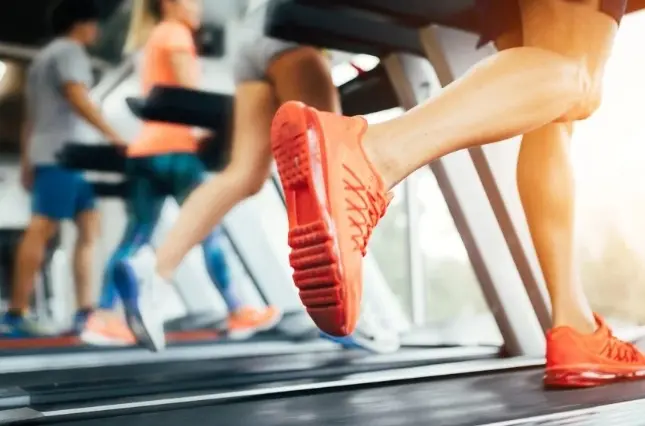The quest for shedding unwanted pounds often leads people to the gym, surrounded by a dizzying array of fitness equipment. Treadmills, ellipticals, stationary bikes, rowing machines, weight machines – the options seem endless. So, which of these machines reign supreme regarding weight loss? The short answer, perhaps frustratingly, is: that there’s no single “best.” The ideal equipment depends on individual preferences, fitness levels, and goals. However, understanding the benefits of different types of equipment can help you make an informed decision and create a workout routine that effectively supports your weight loss journey.
Cardio Crusaders: Burning Calories Efficiently
Cardiovascular machines are often the first thought regarding weight loss and for good reason. They excel at burning calories, a fundamental requirement for creating the calorie deficit needed to lose weight.
-
Treadmill: The treadmill mimics natural movements like walking and running and is versatile and accessible. It allows for easy adjustment of incline and speed, making it suitable for beginners and advanced users alike. The higher the intensity, the more calories burned. However, it can be high-impact, potentially problematic for individuals with joint issues.
-
Elliptical Trainer: Offering a low-impact alternative to the treadmill, the elliptical engages both the upper and lower body, providing a full-body workout and burning a significant number of calories. It’s a good choice for those with knee or ankle concerns.
-
Stationary Bike: Another low-impact option, the stationary bike is easy on the joints and allows for varying resistance levels. It’s particularly beneficial for those recovering from injuries or who prefer seated exercise. Different types, like upright and recumbent bikes, offer varying levels of back support.
-
Rowing Machine: Often overlooked, the rowing machine provides a powerful full-body workout, engaging a large number of muscle groups and burning a substantial amount of calories. It improves cardiovascular fitness and builds strength simultaneously. However, proper form is crucial to avoid injury.

Strength Training Staples: Building Muscle and Boosting Metabolism
While cardio burns calories during the workout, strength training plays a vital role in long-term weight management. Building muscle mass increases your resting metabolic rate, meaning you burn more calories even when you’re not exercising.
-
Weight Machines: These machines guide movement, making them relatively safe and easy to use, especially for beginners. They isolate specific muscle groups, allowing for targeted strength development. However, they may not engage stabilizer muscles as much as free weights.
-
Free Weights (Dumbbells and Barbells): Free weights require more balance and coordination, engaging multiple muscle groups simultaneously. They offer a more natural range of motion and are excellent for building functional strength. However, they require proper form and technique to avoid injury and might be intimidating for beginners.
-
Resistance Bands: Versatile and portable, resistance bands offer a low-impact way to build strength and can be incorporated into various exercises. They are a good option for home workouts and for individuals looking for a gentler approach to strength training.
Beyond the Basics: Hybrid and Specialized Equipment
Some equipment blurs the lines between cardio and strength training or offers unique benefits.
-
Kettlebells: These cannonball-shaped weights are excellent for dynamic, full-body exercises that build strength and improve cardiovascular fitness. They require proper technique but can provide a highly effective workout.
-
Jump Ropes: A simple yet powerful tool for cardio and calorie burning. Jumping rope is inexpensive, portable, and can provide a high-intensity workout in a short amount of time.
The Real Winner: Consistency and Enjoyment
Ultimately, the best fitness equipment for weight loss is the one you will consistently use and enjoy. A state-of-the-art treadmill collecting dust in the corner won’t help you shed pounds. Consider your personal preferences, fitness level, any physical limitations, and access to equipment.
Key Considerations for Choosing Equipment:
-
Your Goals: Are you primarily focused on burning calories or building muscle?
-
Your Fitness Level: Are you a beginner or an experienced exerciser?
-
Your Preferences: Do you prefer cardio or strength training? Do you enjoy social workouts or prefer to exercise alone?
-
Any Physical Limitations: Do you have any joint pain or injuries that might limit your choices?
-
Access and Budget: Do you have access to a gym, or are you looking for home equipment? What is your budget?
Conclusion
Instead of searching for the single “best” piece of equipment, focus on creating a balanced workout routine that incorporates both cardiovascular exercise and strength training. Experiment with different types of equipment to find what you enjoy and what feels effective for you. Remember that a combination of regular exercise regardless of the specific equipment, and a healthy diet is the most effective and sustainable path to weight loss. Consult with a fitness professional for personalized guidance and to ensure you are using equipment safely and effectively.
Post time: 01-08-2025



